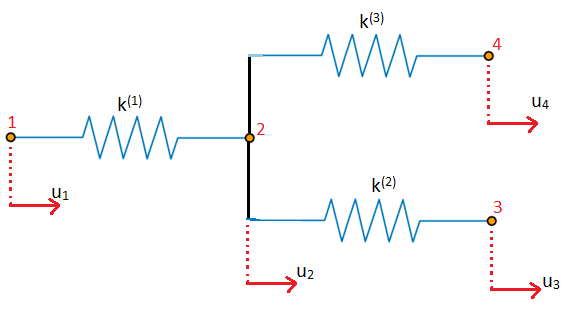Questions
Quick questions
You should be able to answer these questions without too much difficulty after studying this TLP. If not, then you should go through it again!
-
Which is true? For second order elements:
-
Which is true? For first order elements:
-
Which is true? The error between an exact and finite element solution will always be reduced by:
-
If your finite element mesh contains 16 nodes, how many degrees of freedom are there in a coupled thermomechanical simulation:
-
In a structural mechanics analysis, what type of boundary condition is an applied pressure:
-
Discretise the following function using three equal length elements between \(0 \le x \le 6\). Assume the elements are linear (first order), and calculate \(\phi (x = 3.2)\) using the finite element method. Compare your answer to the exact solution.\[\phi = x(x - 3.5)(x + 3) + 30\]
-
Discretise the same function using six equal length elements and find \(\phi (x = 3.2)\) using the finite element method. Compare your answer to the exact solution and to the answer obtained using a three element discretisation.
-
Discretise the same function using three equal length but QUADRATIC elements. Calculate \(\phi (x = 3.2)\) and compare your answer to the ones obtained previously.
-
Using an equal length, 4-element discretisation of \(f(x) = 10 - {x^2}\), calculate \(f(x = 0.6)\) and the error between the finite element and exact solutions.
-
For the system of springs below, determine the global stiffness matrix.

-
A system of 1-dimensional springs has the following global stiffness matrix. Draw the system of springs.


